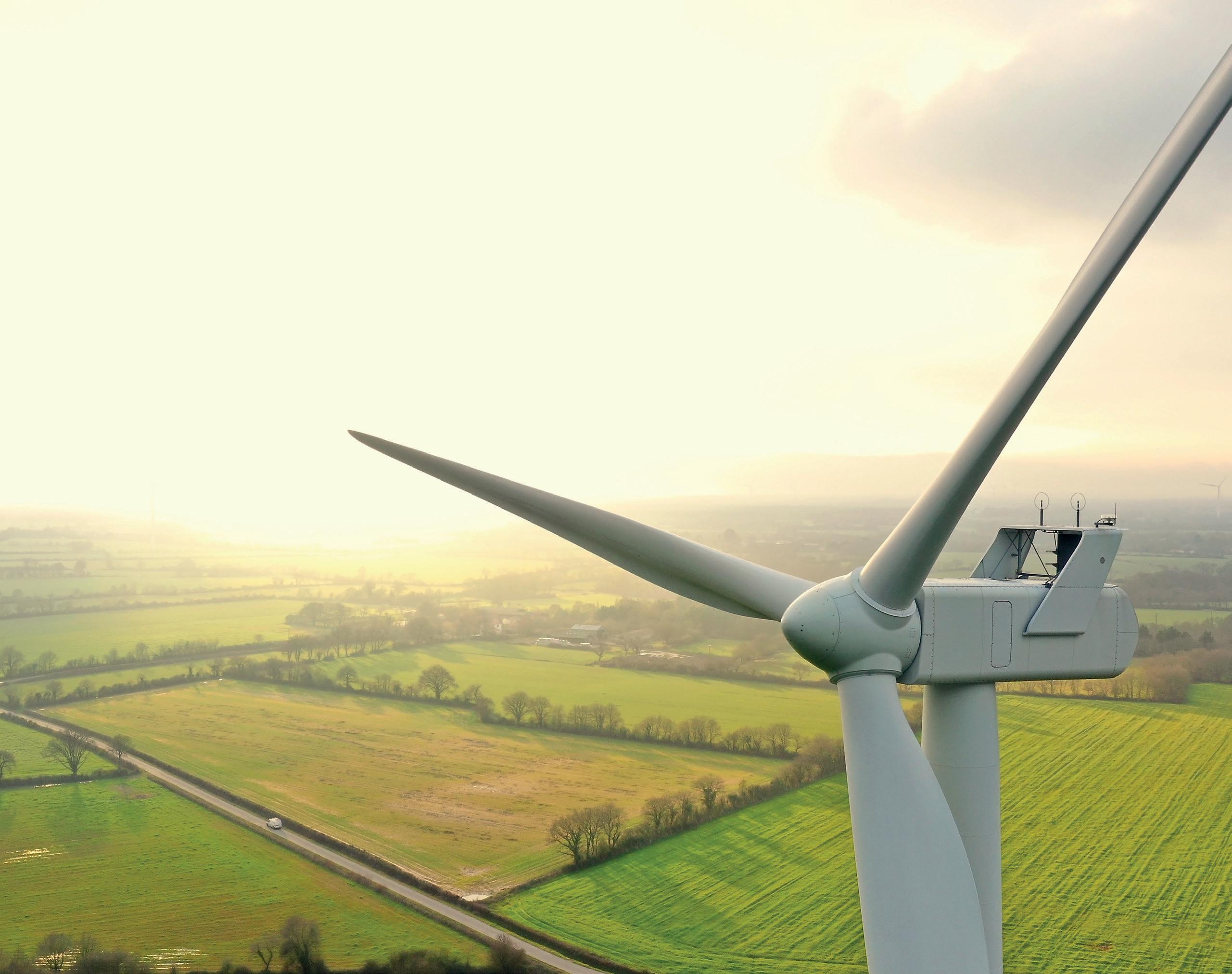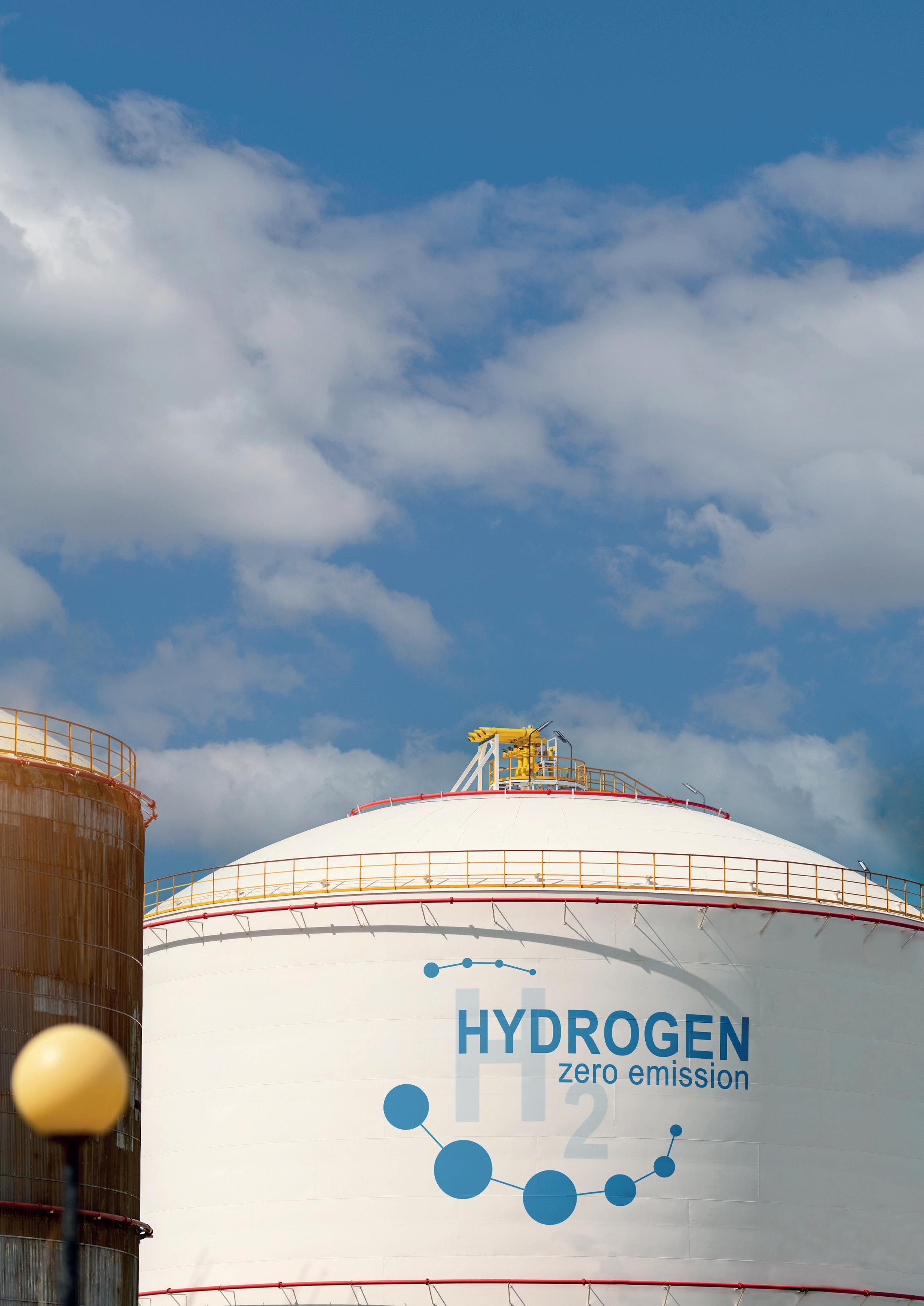
11 minute read
No silver bullet
Bruno Roche, ABB, France,
explains how leveraging digital capabilities can aid the scale-up of low-carbon hydrogen production to accelerate decarbonisation.
Aholistic view of hydrogen production, close collaboration between all stakeholders, and the integration of digital, automation and electrification solutions are all essential to successfully making gigawatt-scale green hydrogen plants a reality in order to
accelerate industrial decarbonisation. Decarbonising heavy industries to reduce harmful greenhouse gas emissions is central to efforts that are focused on limiting the global temperature rise to 1.5°C, in line with the 2015 Paris Agreement goals, and transition the world from fossil fuels such as oil and coal to renewables such as wind and solar photovoltaic (PV).
The recent impact of the conflict in Ukraine on economies, energy costs and supplies has further underlined the importance of energy security and low-carbon fossil fuel alternatives. Unfortunately, there is no silver bullet to the threat posed by climate change; the solution will require a dynamic mix of clean energies, not to mention collaboration and knowledge-sharing on an unprecedented scale.
Until relatively recently, hydrogen has been viewed as something of a controversial, niche element of the energy transition. However, there is now general agreement that its potential uses – directly as a carbon-free fuel or to store and transport renewable energy – will make it invaluable in lowering man-made carbon emissions. It can play a key role in integrating renewable energy into industry value chains around the world, particularly in hard-to-abate industries that cannot readily shift to electrification.1
Why hydrogen?
It is believed that hydrogen – especially when generated from renewable sources – holds tremendous potential to help decarbonise the global economy, reach climate goals, and improve the reliability and resilience of our energy systems. There are many ways that this can be achieved. For example, low-carbon hydrogen could be used as a replacement for fossil fuel combustion or heat generation in heavy industries such as cement and petrochemicals, or as a carrier of renewable energy from where it is generated (solar, wind, hydro, etc) to where it is consumed.
If used directly as a fuel, it emits zero carbon dioxide (CO2) and produces almost no other air pollutants in the process. It can also be utilised to store and transport energy generated from renewable sources – either as a gas or a liquid – in order to counteract intermittency, i.e. when the wind does not blow, or the sun does not shine.2
Another positive is that the production, liquification and/or compression, transportation and consumption of all colour varieties is a known, stable process that uses mature technology and infrastructure. Work is already underway into transporting hydrogen via existing and refurbished gas pipelines.
While grey hydrogen is mainly generated from natural gas via steam methane reforming (SMR), blue hydrogen is produced by carbon capture. Both processes are far from carbon-neutral, however. For this reason, attention is currently focused on carbon-neutral ‘blue-green’ bio-hydrogen using SMR, but with bio-feedstocks. With the addition of carbon capture, this type of hydrogen is even carbon negative. Green hydrogen, meanwhile, is generated using water electrolysis and energy from renewable sources. While green is a goal, all forms of hydrogen will play their part as the industry scales up to meet growing demand, and there will likely be a mix of technological approaches and processes involving all colours of hydrogen while the industry takes shape.2
A problem of scale
However, there are two big problems holding hydrogen back: supply volumes are too low, and costs are too high. The beginnings of a new value chain may be grounded in proven technology, but OEMs are struggling to cope with the demand for giant electrolyser units at present, leading to a growing shortage for green hydrogen. Scale-up is therefore the key piece of the puzzle to provide the quantities of green hydrogen required for industrial end uses, such as feedstocks and fuel, at an affordable price. In addition to this, developing end use solutions to help expand hydrogen use worldwide is also of high importance.
The opportunities are enormous: IHS Markit, now part of S&P Global, estimates that capital spending on low-carbon hydrogen production could reach US$265 billion by 2030.3 However, right now there is simply not enough available. In response to this, kilowatt and megawatt plants are becoming common, gigawatt-sized green hydrogen plants are being planned, and multi-gigawatt-scale facilities are on the not-so-distant horizon. Every six months, the number of green hydrolysis projects is doubling, yet this is only the beginning of what is needed.
Today, the installed base of hydrogen electrolysers powered by renewable energy is just 0.3 GW, with a projected 40 GW to be commissioned by 2030, according to Bloomberg New Energy Finance’s Hydrogen Production Database. However, recent reports show that this project pipeline is nowhere near the exponential 850 GW of expected growth yet to be materialised in order for hydrogen to play its part in a net zero emission scenario.4
For hydrogen to fulfil its vast potential, giga-factories must become the norm. Bigger production plants and volumes translate into much-needed economies of scale that lower the unit cost, and help bring down the levelised cost per kg of green hydrogen production.
Thinking big: current and upcoming projects
Australia and the US lead the way with multi-gigawatt project announcements, the largest being from Green Hydrogen International with the 60 GW Hydrogen City – an integrated production, storage and transport hub that is set to produce more than 3 billion kg/yr of green hydrogen. It will be turned into green ammonia, sustainable aviation fuel (SAF) and other products, or delivered by pipeline to hydrogen power plants and other users in Texas, US.5
Hydrogen City, for example, will receive electricity from a 5 GW/yr RuggedCell electrolyser factory constructed by Canadian company, Hydrogen Optimized. In October 2022, ABB and Hydrogen Optimized signed an agreement to jointly explore the development of large-scale green hydrogen production connected to the electrical grid.6
Gas Sensor Technology for Gas Sensor Technology for Gas Sensor Technology for Decarbonization Decarbonization Decarbonization
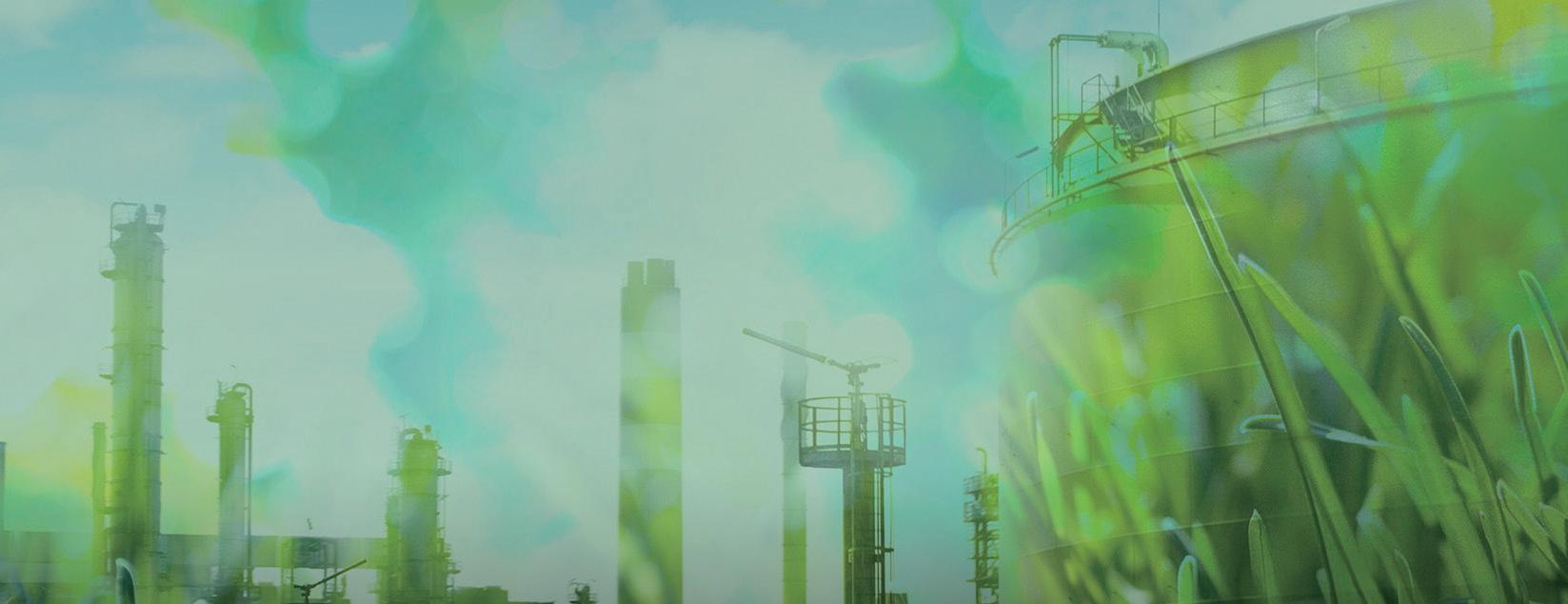
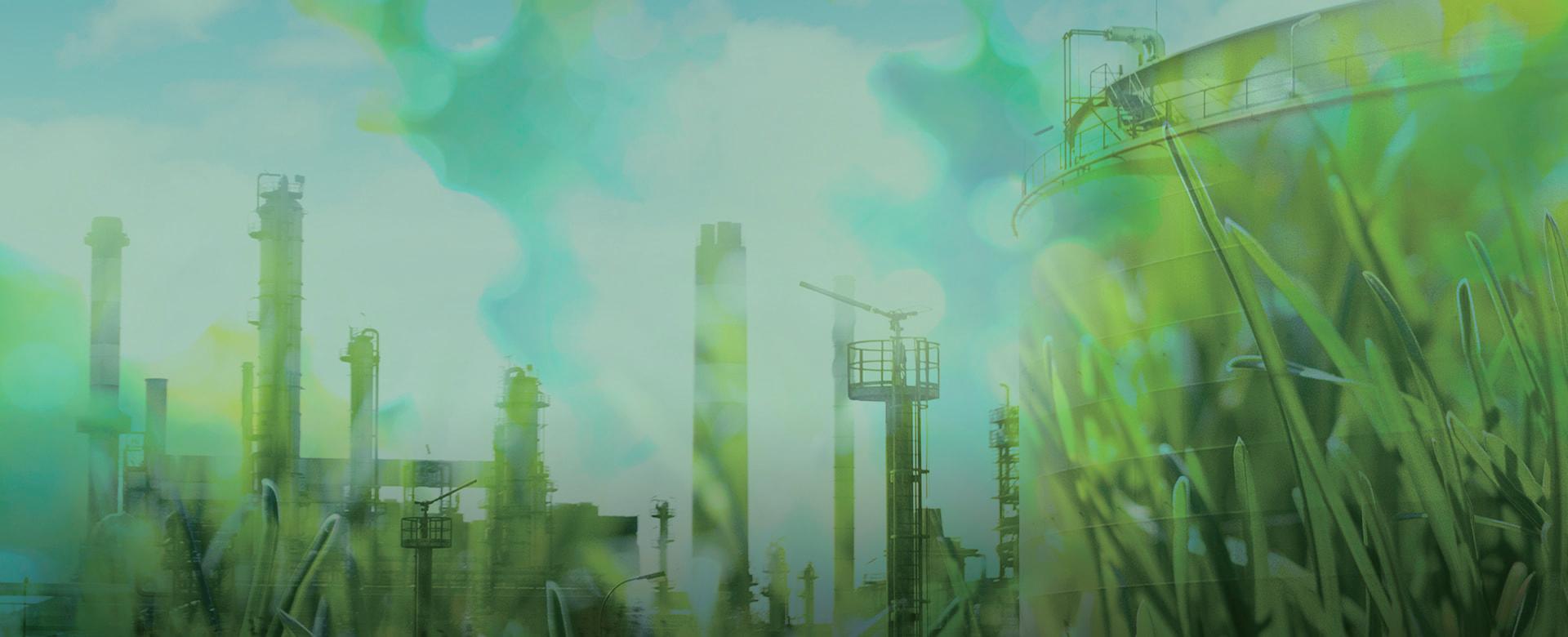
Combining high-precision Combining high-precision Combining high-precision gas sensor technology to support decarbonization gas sensor technology to support decarbonization gas sensor technology to support decarbonization

Measurement performance for methanation Measurement performance for methanation Measurement performance for methanation
Methanation, the conversion of H2 and CO2 into methane, Methanation, the conversion of H2 and CO2 into methane, Methanation, the conversion of H2 and CO2 into methane, the main component of natural gas, is an extremely effective the main component of natural gas, is an extremely effective the main component of natural gas, is an extremely effective technique in helping realize decarbonization. technique in helping realize decarbonization. technique in helping realize decarbonization. It is necessary to monitor the concentrations of H2, CO2, and It is necessary to monitor the concentrations of H2, CO2, and It is necessary to monitor the concentrations of H2, CO2, and CH4 generated during the methanation process. CH4 generated during the methanation process. CH4 generated during the methanation process.
Measuring the total amount of carbon in flare gas Measuring the total amount of carbon in flare gas Measuring the total amount of carbon in flare gas
To move ahead with decarbonization, it is necessary to know To move ahead with decarbonization, it is necessary to know To move ahead with decarbonization, it is necessary to know how much CO2 is generated when flaring gas. how much CO2 is generated when flaring gas. how much CO2 is generated when flaring gas. From figuring out the amount of CO2 that is released during From figuring out the amount of CO2 that is released during From figuring out the amount of CO2 that is released during gas flaring to helping find ways of recycling flare gas into gas flaring to helping find ways of recycling flare gas into gas flaring to helping find ways of recycling flare gas into usable energy (fuel gas), you will find a solution to usable energy (fuel gas), you will find a solution to usable energy (fuel gas), you will find a solution to your problem in RIKEN KEIKI’s gas measurement system. your problem in RIKEN KEIKI’s gas measurement system. your problem in RIKEN KEIKI’s gas measurement system.
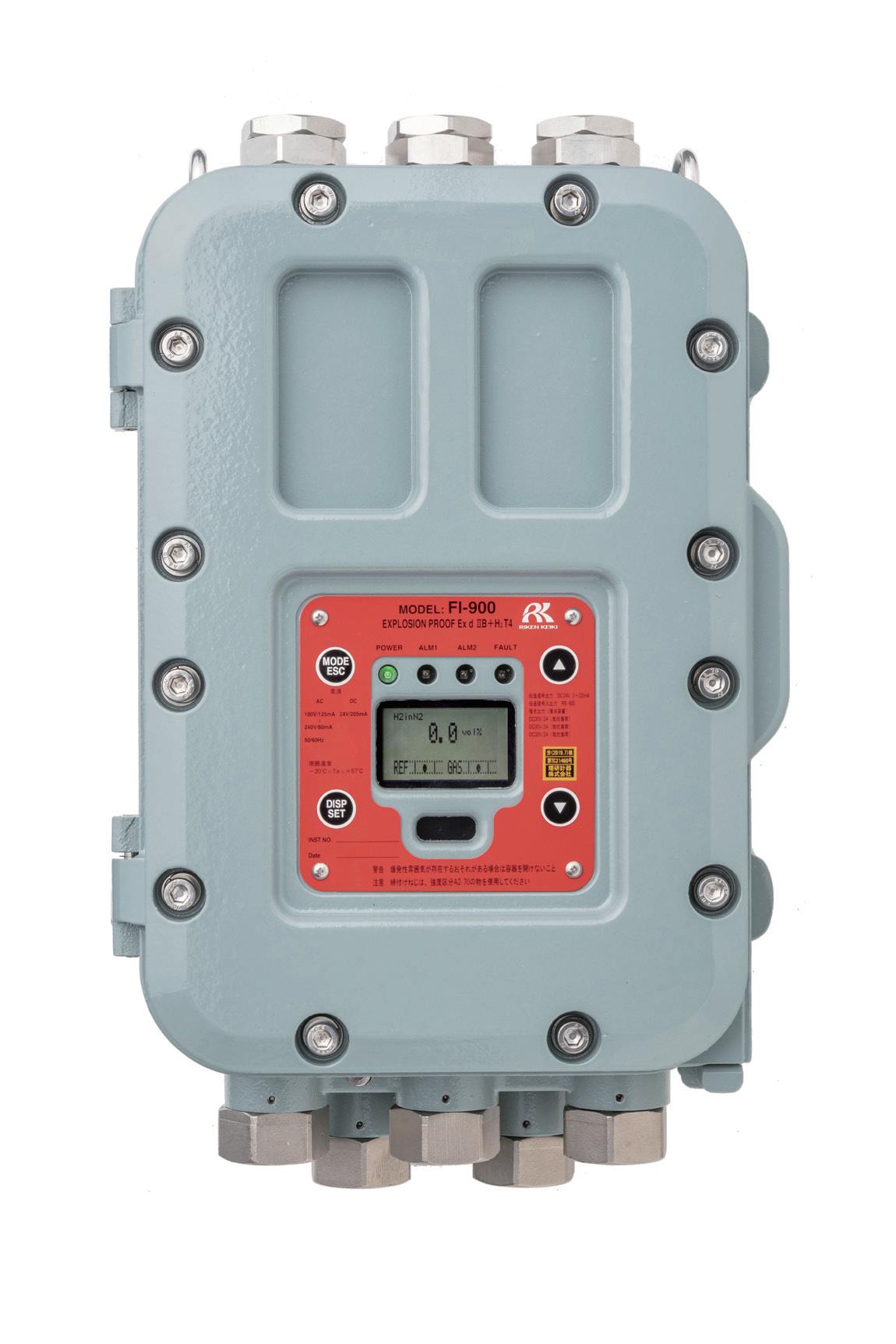

Discover the Riken Keiki Discover the Riken Keiki Discover the Riken Keiki Gas Sensor Technology Gas Sensor Technology Gas Sensor Technology
Elsewhere in the US, ABB is working with Plug Power to apply its experience in electrification to enable power for two major hydrogen production plants, which are set to produce 60 tpd of green hydrogen. The first plant, Project Gateway, is expected to become the largest green hydrogen production facility in the US. The hydrogen produced from the two facilities will be used for logistics and transportation, specifically to replace fossil fuels in on-road applications such as heavy-duty freight vehicles and forklifts.
In China, there is a rapid increase of plants in operation, using the next generation of electrolyser with larger and larger modules. One example here is Peric, a partner with whom ABB has commissioned a first project, and who are in the execution and preparation phase for many more.
However, the race for the world’s largest hydrogen electrolyser is on. In Europe, following testing in Herøya, Norway, a single-stack, high-pressure alkaline unit will be able to produce 1100 normal m3/hr of green hydrogen. ABB is providing electrical equipment for this project, and has also signed a Memorandum of Understanding (MoU) with green hydrogen producer, Lhyfe, and wind power company, wpd, to establish Europe’s largest green hydrogen production facility. Lhyfe’s green hydrogen plant, powered by wpd’s offshore wind farm, is expected to produce around 240 tpd of hydrogen (equivalent to 60 000 bbl/yr of oil). ABB will provide automation and digital technologies to help lower production costs and enable the fastest possible route to scale-up.
When it comes to low-carbon hydrogen, the infrastructure to use and sequester CO2 is necessary before carbon capture can be widely added to existing production or greenfield blue hydrogen production. The Northern Lights project in Norway will feature the world’s first open CO2 transport and storage infrastructure, accelerating industrial decarbonisation and CO2 removal by providing transport and permanent storage in undersea reservoirs. ABB’s automation, electrification and digital solutions are to be used, and there are plans to store over 5 million tpy of CO2.
Scaling up plants from megawatts to hundreds of megawatts, or even gigawatts, presents a new set of challenges – not just compared with smaller electrolysers, but also in relation to working processes, CAPEX and OPEX. It is important that operators consider the latter issue. The electricity to run a hydrogen plant, for example, will cost far more than the CAPEX over the long-term; in fact, more than 70% of the total OPEX to make 1 kg of hydrogen is the electricity cost to power the electrolyser. Return on investment will heavily depend on how efficiently the energy required to produce the hydrogen is managed and optimised.
Much of what is involved in undertaking this massive scale-up of electrolyser capacity is uncharted territory. This includes infrastructure and technology such as the electrical supply for AC/DC conversion, as well as automation and digitalisation to produce green hydrogen at the lowest cost.
The beginning of this article mentioned that collaboration is crucial to the energy transition, and hydrogen scale-up is a compelling example of this. Companies must take a holistic view and partner with a technology specialist, one with deep domain knowledge of electrical and automation engineering, powerful project execution and safety skills, and the latest digitalisation and remote analysis tools.
ABB’s process automation and digitalisation portfolio – which encompasses distributed control and energy management systems, digitalisation software, power apparatus for motors and pumps, and sensors – enables high-efficiency operation while simultaneously checking for potential leakages.
To truly achieve low costs, and continuously reduce them over time, the complex scale-up of green hydrogen-based electrical energy systems will require superior project execution. ABB’s Adaptive Execution™ methods can drive better cost, material and resource efficiencies by integrating expert teams, new technologies, agile processes, shared learnings, and proven methodologies. This may also include the task of integrating the green hydrogen into existing, non-greenfield processes and plants.
New horizons
Knowledge-sharing between technology providers, EPCs, investors and operators is already leading to new innovations to support large-scale, renewable-based hydrogen use in industry. ABB, IBM and Worley, for example, have joined forces to create a repeatable, end-to-end approach known as ‘Green Hydrogen in a Box’. The integrated, digitally-enabled solution enables plant owners to build green hydrogen assets quicker, cheaper and more safely, and operate them with increased efficiency.
Scaling up hydrogen production to meet rising demand for renewable power is arguably the greatest challenge facing the nascent hydrogen industry. However, the sector – in partnership with technology vendors with industry expertise and knowledge – is rising to meet that challenge. This type of collaboration is essential to scaling up the production of clean, green hydrogen both quickly and cost-effectively, and will make a world of difference in ensuring that its potential as an integral part of the energy transition is fully realised.
References
1. ‘Hydrogen – the key to a low-carbon future’, ABB, https://new. abb.com/process-automation/energy-industries/hydrogen 2. ‘Why Hydrogen?’, ABB, https://new.abb.com/processautomation/energy-industries/hydrogen/why-hydrogen 3. ‘Chemical Week by S&P Global’, https://chemweek.com/home 4. ‘Growing Gigawatts of Green Hydrogen: A look at how we can deploy the hundreds of gigawatts of electrolyzers needed this decade’, RMI, (11 October 2021), https://rmi.org/growinggigawatts-of-green-hydrogen/ 5. ‘Hydrogen City’, GHI, https://www.ghi-corp.com/projects/ hydrogen-city 6. ‘World’s largest green hydrogen project to get its own 5GW
‘high-current’ electrolyser factory’, Recharge, (29 April 2022), www.rechargenews.com/energy-transition/worlds-largestgreen-hydrogen-project-to-get-its-own-5gw-high-currentelectrolyser-factory/2-1-1209789
The premier source of technical and analytical information for the renewable energy industry, covering solar, wind, bioenergy and storage.
